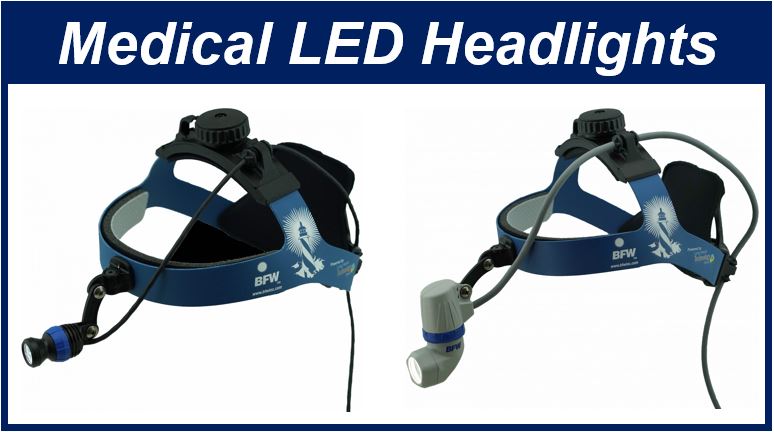
With the advancements in medical procedures, surgeons require a better lighting system to operate efficiently. Evolution in OR lighting has enabled surgeons and operating staff to work with greater visibility. Apart from being a more sustainable option due to their durability and energy efficiency, LED surgical headlights assist in improving patient outcomes as they increase the surgeon’s focus and performance.
In this context, LED stands for Light-Emitting Diode. When an electric current flows through an LED, it emits light.
They are lightweight
Unlike halogen bulbs, LED surgical headlights feature a set of Lithium-polymer cells along with a group of more compact bulbs. These cells are known to be lightweight due to their composition, and the compact bulbs consume less space and thus require a smaller base area in which to be fixed. That is why they can be as light as 150 grams (5.29 ounces).
Unlike those bulky traditional xenon headlights, they don’t feel heavy on the head, and thus help surgeons focus better. Additionally, if your head is carrying a lighter weight, you can last longer without getting overtired.
They generate less heat
Traditional halogen bulbs produce a large amount of heat that not only causes discomfort for the surgeon but can also dry out the patient’s exposed tissue. The temperature even interferes with the laminar flow responsible for maintaining a bacteria-free environment. LED lights, on the other hand, are a better option because they produce virtually no heat.
They provide better shadow control
If you struggle with shadows created by your arm, head, or any other part of your or somebody else’s body, you will definitely prefer LED, which due to their special optics, generate a homogenous, clear, and shadowless light. Such lights feature a technology that allows the light waves to cross focus and provide the right amount of light energy only to the objects that need it.
They provide a more accurate color rendition
Light with a better Colour Rendering Index (CRI) makes it easier for the viewer to make distinctions between different colors. Traditional halogen headlights have sufficiently high CRI, but only focus on increasing the visibility of pastel colors. On the other hand, a high quality LED light provides a bright white spot, which makes it easier for the surgeon to distinguish between the different shades of veins, tissues, wounds, etc.
They provide better operating posture
Halogen lights do not provide enough illumination on the body part the surgeon is focusing on. They have to bend right down when they need to look at something carefully or in detail. Remaining in a bent over position for hours on end is very bad for the surgeon’s back.
With LED headlights, however, they do not have to be in unnatural positions to see well. These lights allow the surgical team to work ergonomically thanks to their bright and well-targeted illumination.
They provide freedom of movement
Nobody wants to be tangled up in cables during an activity that requires total focus and precision. Unlike those bulky and movable table lights, LED lights are wireless. The only wire they need is to a lightweight battery, which users keep in their pocket. The wireless feature of this system gives surgeons the freedom to move their hands unhindered.
___________________________________________________
Interesting related article: “Tired of dim lights while driving?”

